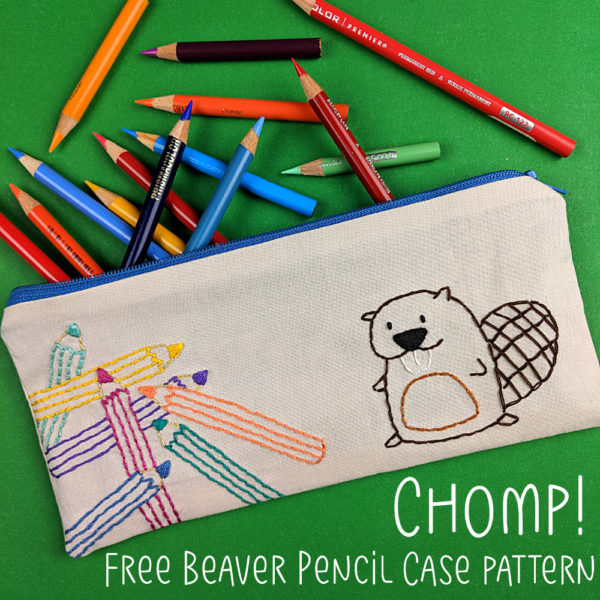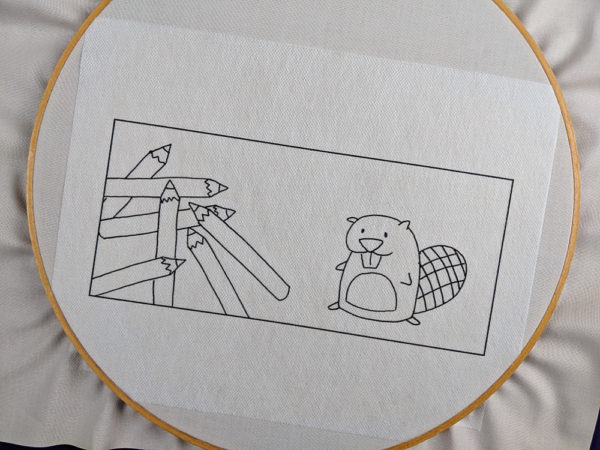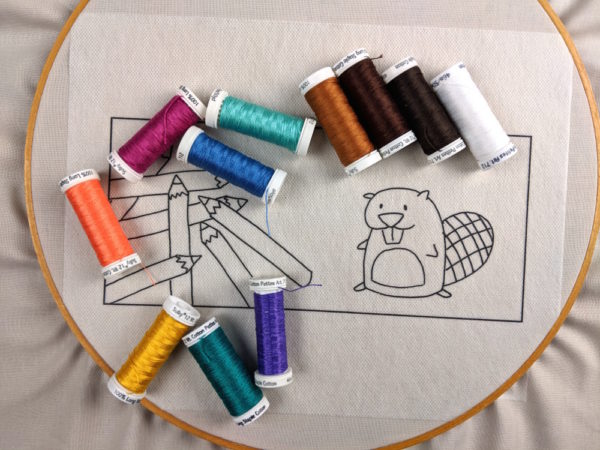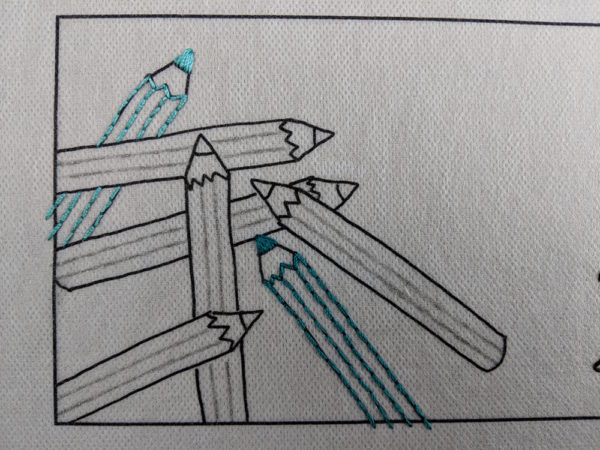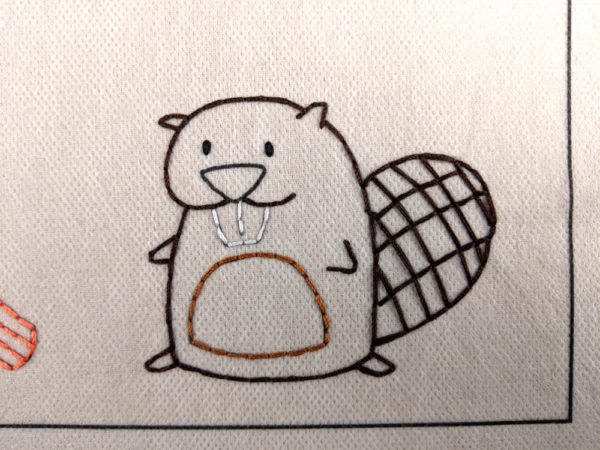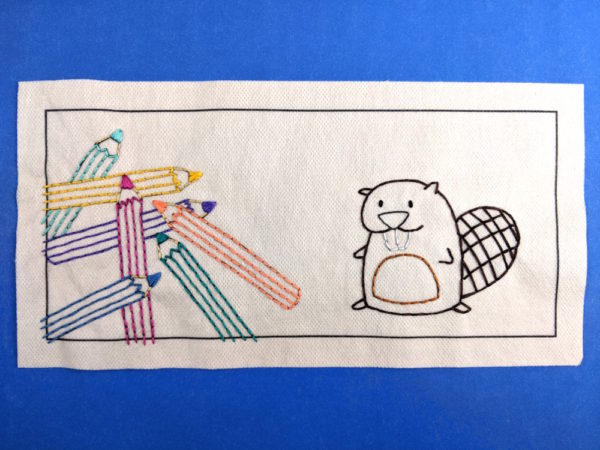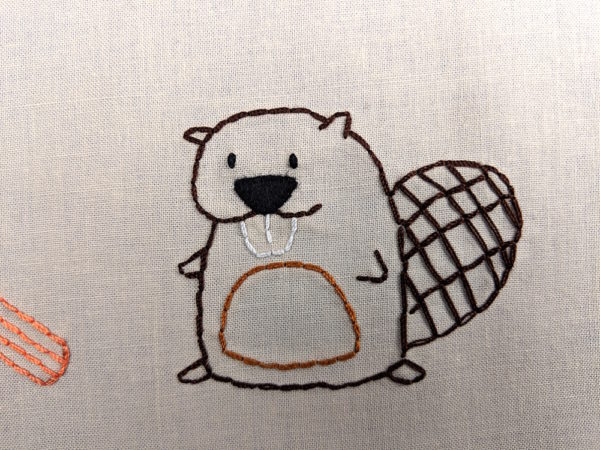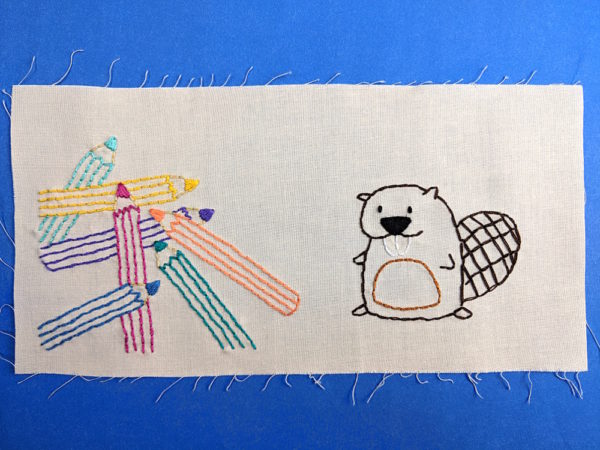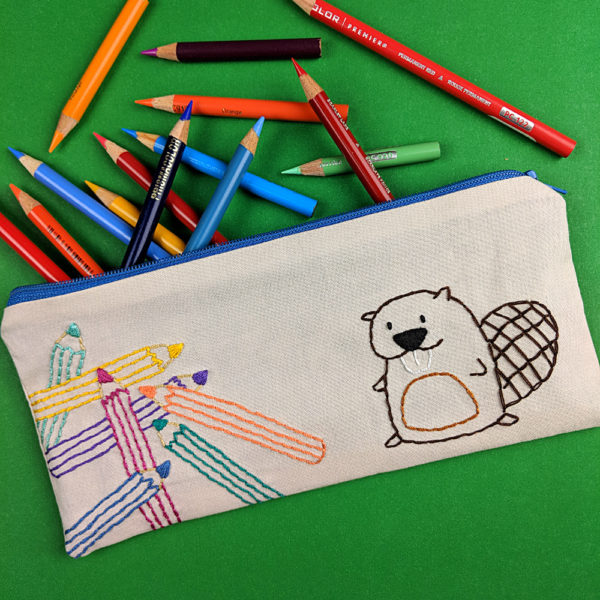I’m participating in the Back to School Sewing Series with Sulky. You can make this fun pencil case!
That beaver can’t wait to chomp on all those colored pencils. 🙂
See a little sneak peek of that beaver design here – including a look at all the beaver designs I didn’t use. 🙂
Materials
You can find links to sources for my favorite tools and supplies here.
- one fat quarter of the main fabric
- scraps of lining fabric
- Sulky Sticky Fabri-solvy
- Sulky Petites 12 wt. embroidery thread
- #8 embroidery needle
- tiny scrap of black felt
- 9 inch zipper
Step 1
Download the embroidery pattern here.
Step 2
Print or trace the pattern out onto a sheet of Sulky Sticky Fabri-solvy at 100% size. The rectangle should be 4 x 9 inches.
Step 3
Peel off the paper backing and stick the pattern onto the fabric. Make sure you position it so that the whole image will fit in the hoop, with fabric all the way around.
Step 4
Choose your threads!
So many pretty colors. 🙂
Step 5
Embroider the design using two strands of Sulky 12 wt. thread. Stitch right through the stabilizer and the fabric.
I used backstitch for all the lines. Learn how to backstitch here.
I used satin stitch for the pencil leads. This video shows how I satin stitch pointy shapes.
Look closer!
I decided partway through stitching that I wanted a little more color on the barrels of the pencils – so I added some stripes running down them.
Your pattern has the added stripes. 🙂
That nose!
I wanted the nose to be solid, but instead of satin stitching I decided to applique it with a tiny scrap of black felt for a velvety soft texture.
At this point I just left it unstitched.
Step 6
Trim the fabric down to 1/2 inch outside the rectangle.
Make sure you do that now – once you soak away the stabilizer that handy line will disappear. 🙂
Step 7
Soak the piece in cold water for an hour or longer. I often leave mine to soak overnight with no problem. Rinse it in clean water, gently squeeze out the extra water, and iron it dry face down on a fluffy towel. This video shows how I iron my embroidery dry without smooshing the stitches.
Step 8
Whipstitch the nose in place using matching thread.
For a small piece like this I like to use a glue stick to hold the piece in place while I stitch it down.
Step 9
Stitching done!
The front piece for your pencil case is all fancied up. Now it’s time to sew it up into a pouch.
Cut a back piece from the main fabric 10 x 5 inches.
Cut two lining pieces, also 10 x 5 inches.
Step 10
Follow the instructions in this post to sew up your fancy lined zipper pouch. 🙂
Finished!
Now – go check out the rest of the series! It’s a fun group of free projects!
Happy stitching!
























